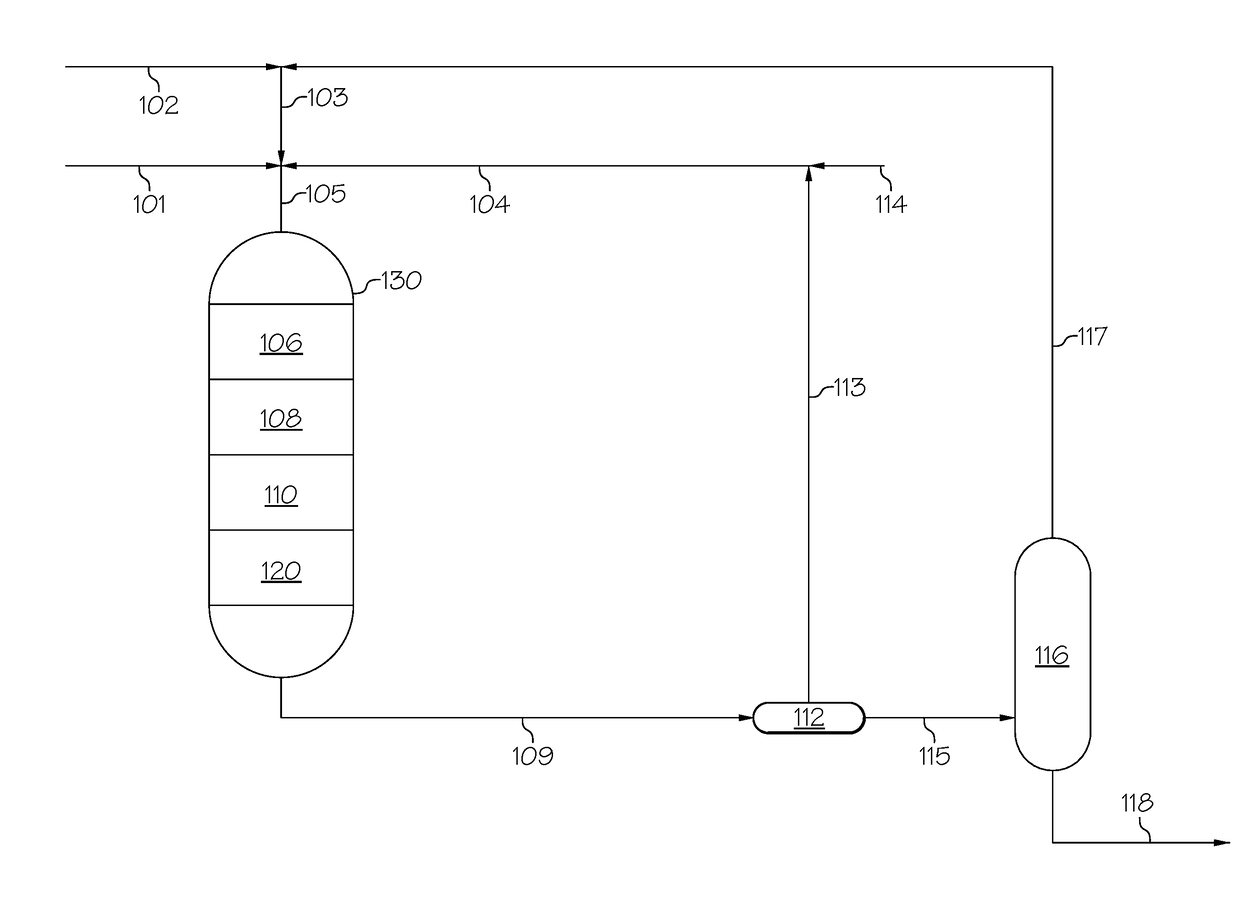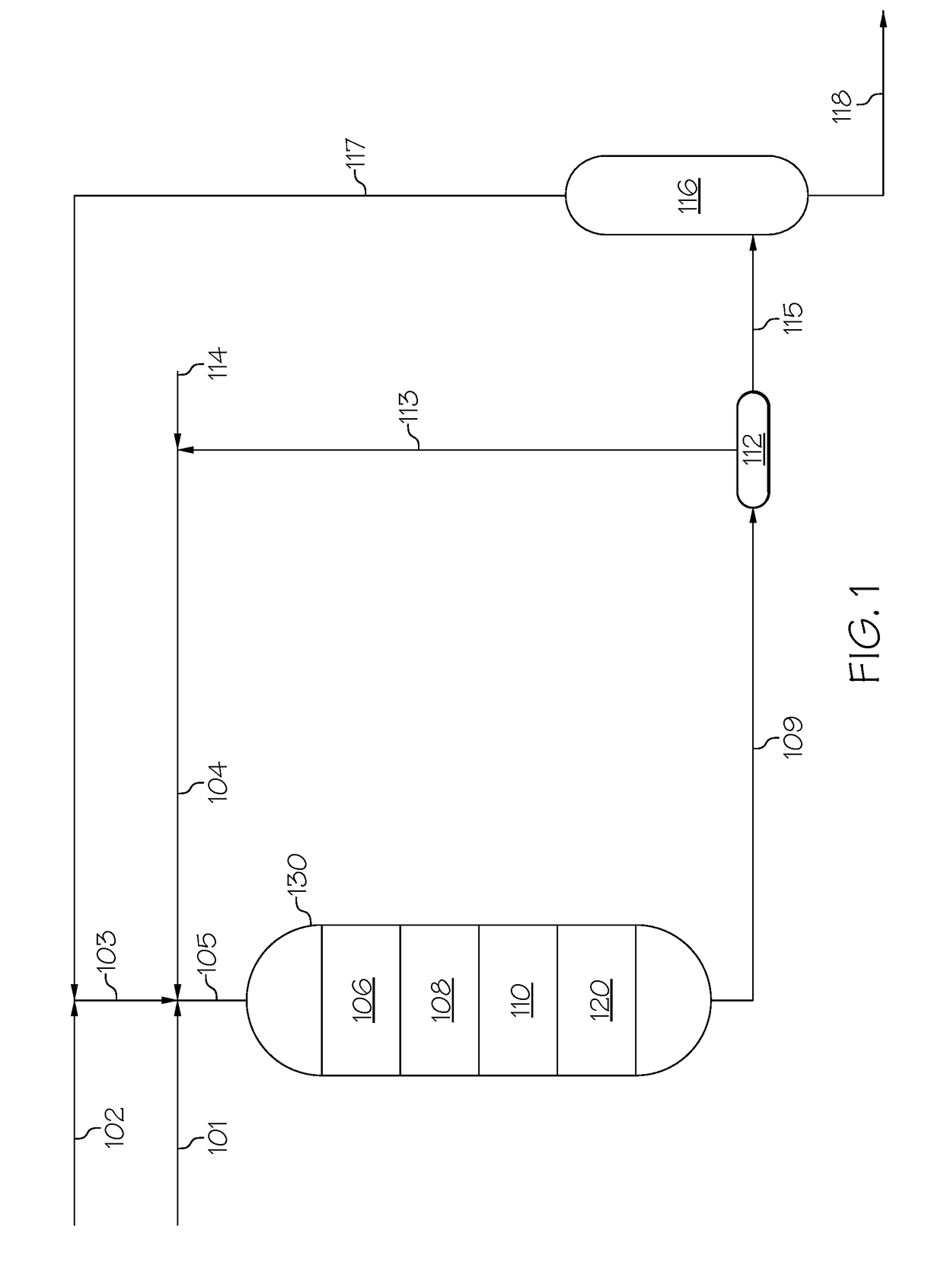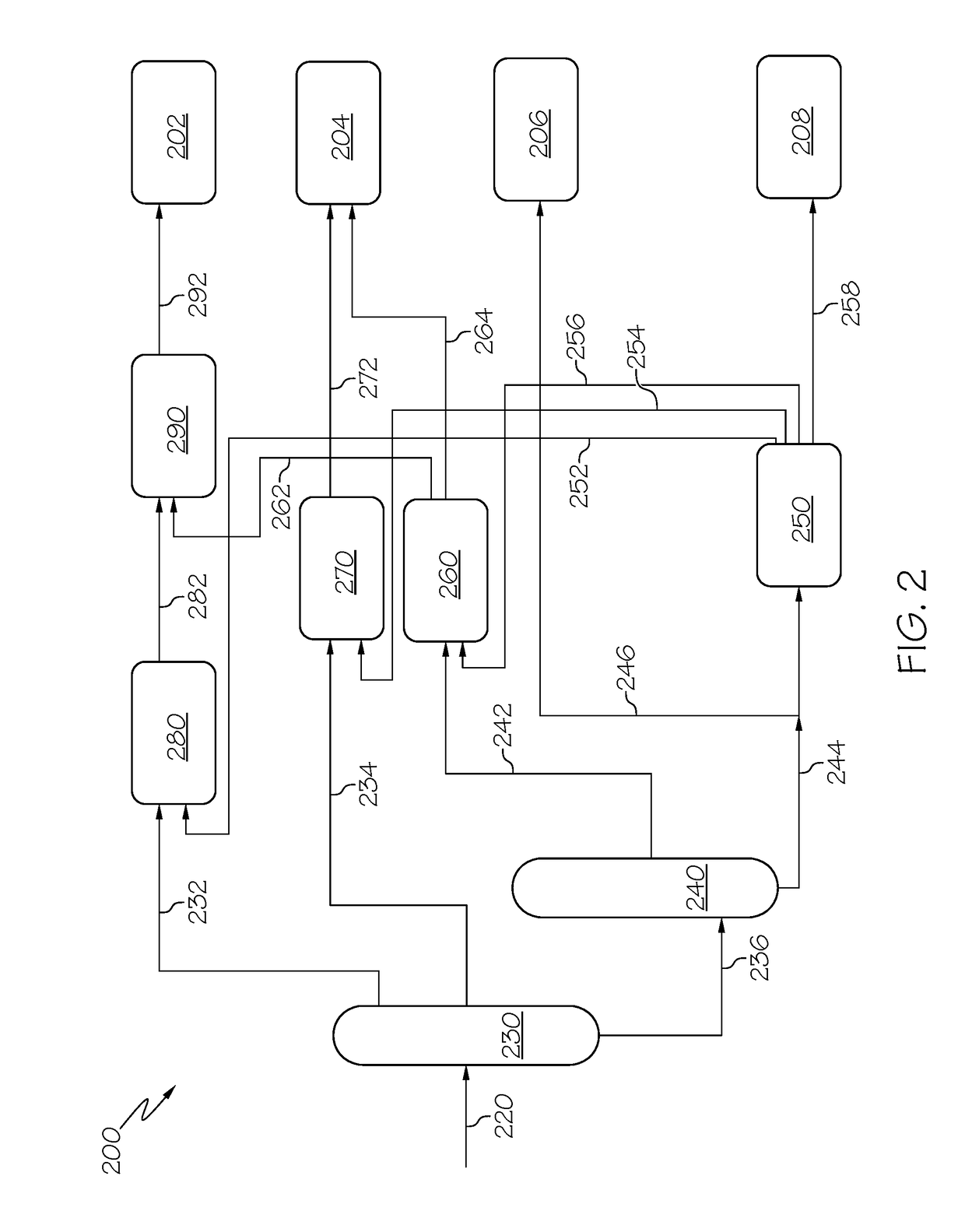Systems and methods for upgrading heavy oils
a technology of heavy oil and upgrading method, which is applied in the petroleum industry, hydrocarbon oil treatment, and refining to eliminate heteroatoms, etc., can solve the problems of limitations in catalytic activity of existing catalysts utilized in hydroprocessing pretreatment, and achieve enhanced catalytic functionality, enhanced aromatic cracking functionality, and enhanced catalytic functionality
- Summary
- Abstract
- Description
- Claims
- Application Information
AI Technical Summary
Benefits of technology
Problems solved by technology
Method used
Image
Examples
example 1
on of Mesoporous Hydrocracking Catalyst
[0076]A hydrocracking catalyst comprising mesoporous zeolite as described previously in this disclosure was synthesized. 74.0 g of commercial NaY zeolite (commercially available as CBV-100 from Zeolyst) was added in 400 milliliters (mL) of 3 molar (M) sodium hydroxide (NaOH) solution, stirred at 100° C. for 12 hours. Then, 60.0 g of cetyl trimethylammonium bromide (CTAB) was added into prepared mixture while the acidity was controlled at 10 pH with 3 M hydrochloric acid solution. The mixture was aged at 80° C. for 9 hours, and then transferred into a Teflon-lined stainless steel autoclave and crystallized at 100° C. for 24 hours. Following the crystallization, the sample was washed with deionized water, dried at 110° C. for 12 hours, and calcined at 550° C. for 6 hours. The as-made sample was ion-exchanged with 2.5 M ammonium nitrate (NH4NO3) solution at 90° C. for 2 hours, followed by a steam treatment (at a flow rate of 1 milliliter per minut...
example 2
on of Conventional Hydrocracking Catalyst
[0077]A conventional hydrocracking catalyst (including a microporous zeolite) was produced by a method similar to that of Example 1 which utilized a commercial microporous zeolite. In a mortar, 34 g of microporous zeolite (commercially available as ZEOLYST® CBV-600 from Micrometrics), 15 g of MoO3, 20 g of Ni(NO3)26H2O, and 30.9 g of alumina (commercially available as PURALOX® HP 14 / 150 from Sasol) were mixed evenly. Then, 98.6 g of binder made from boehmite alumina (commercially available as CATAPAL® from Sasol) and diluted nitric acid (HNO3) (ignition of loss: 70 wt. %) was added, which pasted the mixture to form a dough by adding an appropriate amount of water. The dough was extruded with an extruder to form a cylindered extrudate. The extrudate was dried at 110° C. overnight, and calcinated at 500° C. for 4 hours.
example 3
of Prepared Hydrocracking Catalysts
[0078]The prepared catalysts of Examples 1 and 2 were analyzed by BET analysis no determine surface area and pore volume. Additionally, micropore (less than 2 nm) and mesopore (greater than 2 nm) surface area and pore volume were determined. The results are shown in Table 2, which shows the catalyst of Example 1 (conventional) had more micropore surface area and micropore pore volume than mesopore surface area and mesopore pore volume. Additionally, the catalyst of Example 2 had more mesopore surface area and mesopore pore volume than micropore surface area and micropore pore volume. These results indicate that the catalyst of Example 1 was microporous (that is, average pore size of less than 2 nm) and the catalyst of Example 2 was mesoporous (that is, average pore size of at least 2 nm).
TABLE 2Porosity Analysis of Catalysts of Example 1 and Example 2Catalyst ofExample 2Catalyst ofSample(conventional)Example 1Surface area (m2 / g)902895Micropore (2 / g...
PUM
| Property | Measurement | Unit |
|---|---|---|
| pore size | aaaaa | aaaaa |
| pore size | aaaaa | aaaaa |
| wt. % | aaaaa | aaaaa |
Abstract
Description
Claims
Application Information
 Login to View More
Login to View More - R&D
- Intellectual Property
- Life Sciences
- Materials
- Tech Scout
- Unparalleled Data Quality
- Higher Quality Content
- 60% Fewer Hallucinations
Browse by: Latest US Patents, China's latest patents, Technical Efficacy Thesaurus, Application Domain, Technology Topic, Popular Technical Reports.
© 2025 PatSnap. All rights reserved.Legal|Privacy policy|Modern Slavery Act Transparency Statement|Sitemap|About US| Contact US: help@patsnap.com



